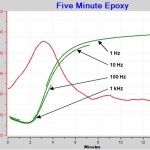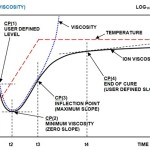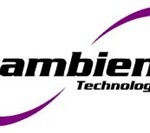You will notice a new fresh look to the blog. In order to be mobile friendly, I needed to update my theme (the software that is the background for WordPress). With the new look, the blog will be easy to navigate on your smart phone as well as your laptop or desktop. None of the content changed and all of the pages remain intact. We will still continue to deliver ... [Click to Continue...]
Dielectric Cure Monitoring Part 13: Equipment for Dielectric Cure Monitoring
Guest Post by Huan Lee, Lambient Technologies Dielectric cure monitors measure the dielectric properties of material at a single frequency or across a range of frequencies, selectively revealing the influence of mobile ions and dipole rotation. As we saw in previous posts, ion viscosity is frequency independent resistivity (rDC) and is often proportional to mechanical ... [Click to Continue...]
Dielectric Cure Monitoring Part 12: Dielectric Sensors
Guest Post by Huan Lee, Lambient Technologies The ion viscosity of a thermoset is the frequency independent resistivity (rDC). In many cases ion viscosity is proportional to mechanical viscosity before gelation and proportional to modulus after gelation, making ion viscosity a useful probe of material state through the entire cure. Figure 1 shows the behavior of a ... [Click to Continue...]
Dielectric Cure Monitoring Part 11: Identifying Ion Viscosity
Guest post by Huan Lee, Lambient Technologies In Part 10 of this series, I defined ion viscosity (IV) as the frequency independent resistivity (ρDC) of a polymer, which correlates with viscosity before gelation and modulus after gelation. For dielectric cure monitoring it is important to understand how to identify ion viscosity and isolate it from other factors. Many in ... [Click to Continue...]
Dielectric Cure Monitoring Part 10: What Does Dielectric Cure Monitoring Measure?
Guest Post by Huan Lee, Lambient Technologies In the first post of his series about dielectric cure monitoring (DEA), Jeff Gotro mentioned the “AHA” moment at a Gordon Conference when he heard Prof. Stephen Senturia speak about dielectric sensors. At that time Steve, with myself and several others in his research group at MIT, had recently founded Micromet Instruments to ... [Click to Continue...]




